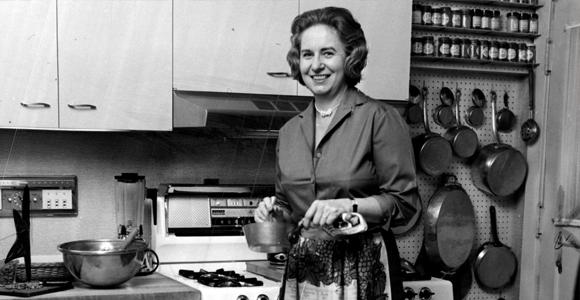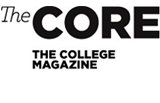
Forgotten history
Food life
Fine dining found a fine muse in Alma Lach, EX’38.
Elizabeth Station
Alma Lach, EX’38, cookbook author, food consultant, and faculty wife, died last fall at age 99. Her obituary in the Chicago Sun-Times, where she was food editor from 1957 to 1965, noted that she hosted a party a few days before her passing. As Lach approached her hundredth birthday, she no longer served multicourse meals but offered drinks and “very elaborate grazing,” says her daughter Sandra Lach Arlinghaus, U-High’60.
A few tributes reported, erroneously, that Lach graduated from the University with a degree in home economics. The facts are less tidy. A farm girl from New Salem, Illinois, Alma Satorius dropped out of the College in 1935 after one year. She took English classes and, according to her daughter, may have participated in a home ec nutrition experiment that involved living at Robie House with her older sister Mary, SM’34.
Alma met a history grad student, Donald Lach, PhD’41, while living at International House. They married in 1939 and embarked on six decades of shared travel, study, entertaining, and food—always food. Donald, who studied historical connections between Europe and Asia in the 16th through 18th centuries, joined the University faculty in 1948. The next year he won a Fulbright to France and made a declaration that charted his wife’s future, she wrote in Cooking à la Cordon Bleu (1970). “He ordained: ‘you will go to the Cordon Bleu and learn to make a sauce. I’m tired of country gravy.’”
As a child, Lach had learned to milk cows and cook on a wood-burning stove. In Paris she seized the chance to study French cooking—like another American chef, Julia Child—at the Cordon Bleu. She learned to prepare classic sauces as well as pastry, poisson, and poultry. (And since her Paris apartment lacked refrigeration, she mastered the art of twice-daily food shopping.) Over three sojourns to France with her husband and daughter, Lach continued her studies and in 1956 became one of the first Americans to earn a grand diplôme at the school.
Early in her career, Alma Lach published A Child’s First Cook Book (1950) and created a TV cooking show for kids. Earning the grand diplôme opened a whole new professional world. As Sun-Times food editor, she wrote Sunday features on gourmet cookery and learned food photography. She started a cooking school, wrote Hows and Whys of French Cooking (1974), and became a consultant to the city’s Lettuce Entertain You restaurants. Lach created recipes and offered guidance on all aspects of fine dining: assembling menus, setting an elegant table, handling food. “She was very artistic in nature,” says Arlinghaus. “She saw a need to create a whole picture.”
Lach loved to present exotic, challenging dishes. In 1968 the New York Times published her adaptation of a Tokyo hotel chef’s recipe for cooking shrimp and lacy sprigs of parsley in tempura. She took a Chinese vegetable-carving course in Hong Kong and learned to sculpt a frog from a cucumber as a garnish. In her sunset years she used a scanner and Photoshop to create artful images of flowers that she uploaded to her website, almalach.com.
Daughters often entertain in the style their mothers taught them. Arlinghaus recalls how her mother liked to slice a tomato in the French style, from top to bottom, and fan the rounds on a plate. Similarly, she says, “I love to make food look beautiful—especially appetizers.” An adjunct professor of mathematical geography, Arlinghaus arranges tea sandwiches in symmetrical patterns. She and her husband enjoy throwing big dinner parties, and she too can carve a frog from a cucumber.
Try Lach’s recipe for galopins (bread pancakes).
